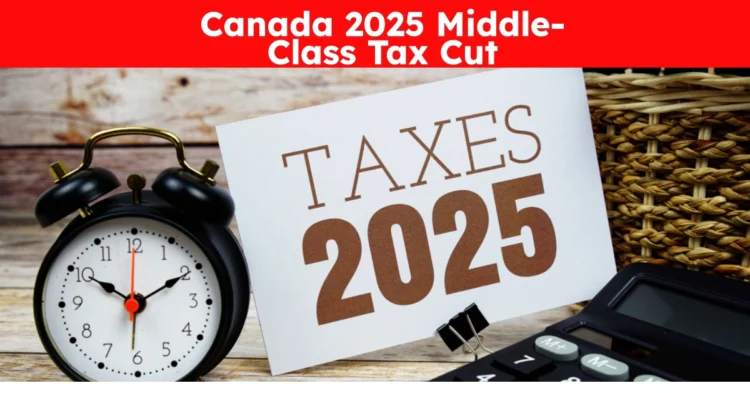Canadians are about to see a noticeable bump in their take-home pay beginning July 1, 2025, thanks to a new federal tax cut aimed squarely at the middle class. The Government of Canada, under newly sworn-in Prime Minister Mark Carney, has officially announced a reduction in the lowest personal income tax rate from 15% to 14%, a central campaign promise now quickly turning into reality.
Table of Contents
What Is the 2025 Canadian Federal Tax Cut?
As one of its first major policy moves following the recent federal election, the Carney government is implementing a 1% tax cut on the lowest federal income tax bracket. Though the percentage might seem small, it represents meaningful savings for millions of Canadians — particularly middle-income earners and dual-income households.
How Much Will You Save?
According to the Department of Finance Canada, this federal tax cut could mean:
- Up to $840 per year in savings for a typical two-income household
- Over $27 billion in total tax relief projected over the next five years
This change comes at a crucial time as Canadians continue to grapple with a high cost of living, inflation, and interest rate pressures. The government’s messaging is clear: “putting money back into Canadians’ pockets” is a top priority.
Ontario Child Benefit Payment Arriving May 20, 2025: Check Eligibility and Amounts Now
Victoria Day 2025 Isn’t a Stat Holiday for Everyone in Canada — Here’s Who Still Has to Work
When Will It Take Effect?
The tax cut is expected to be legislated in the coming weeks and will take effect starting July 1, 2025 — right at the midpoint of the 2025 tax year.
The Canada Revenue Agency (CRA) will update payroll deduction tables so employers can begin deducting less federal tax from your paycheque starting this summer.
If your employer is unable to update payroll systems in time, you’ll still benefit — the difference will be reflected in your 2025 income tax refund when you file next spring.
Who Will Benefit?
The tax cut applies to all individuals earning taxable income in the lowest bracket, meaning most working Canadians will benefit.
- The lowest federal tax bracket typically applies to income up to approximately $55,000 (based on recent federal tax thresholds)
- Anyone earning above this still benefits from the reduction on their first bracket of taxable income
This policy targets those most impacted by rising living costs, including young workers, families, and retirees with modest incomes.
What the Government Is Saying
Prime Minister Mark Carney described the tax cut as a “first step to ease the cost of living burden”, and a cornerstone of his economic agenda.
Finance Minister François-Philippe Champagne, who has resumed his role as Minister of Finance and National Revenue, said the cut is about helping Canadians “get ahead financially” while also stimulating broader economic growth.
The timing is also strategic — coming ahead of Parliament’s return on May 26, 2025, the move signals the new government’s urgency in delivering on economic promises.
Summary: What Canadians Need to Know About the 2025 Tax Cut
| Key Details | Information |
|---|---|
| Tax Rate Change | 15% → 14% on the lowest personal income bracket |
| Start Date | July 1, 2025 |
| Estimated Savings | Up to $840/year per two-income household |
| Who Benefits | Most Canadians, especially middle-income earners |
| How You’ll See It | Larger paycheques starting summer, or 2025 tax refund |
| CRA Action | Updated payroll tax tables effective July 1 |
| Total Tax Relief Over 5 Years | $27 billion |
This federal tax cut represents one of the biggest personal tax changes in recent years and could signal more affordability-focused policies from the Carney government in the coming months.
Stay tuned for updates as legislation is finalized and payroll adjustments roll out.

